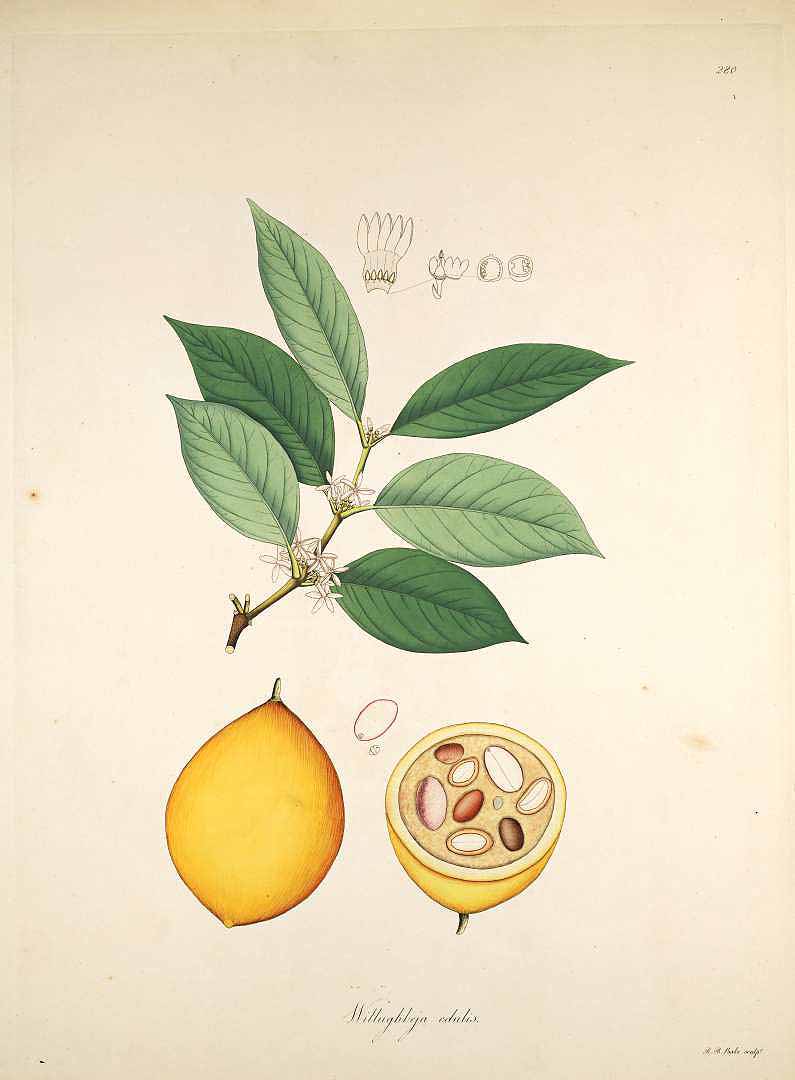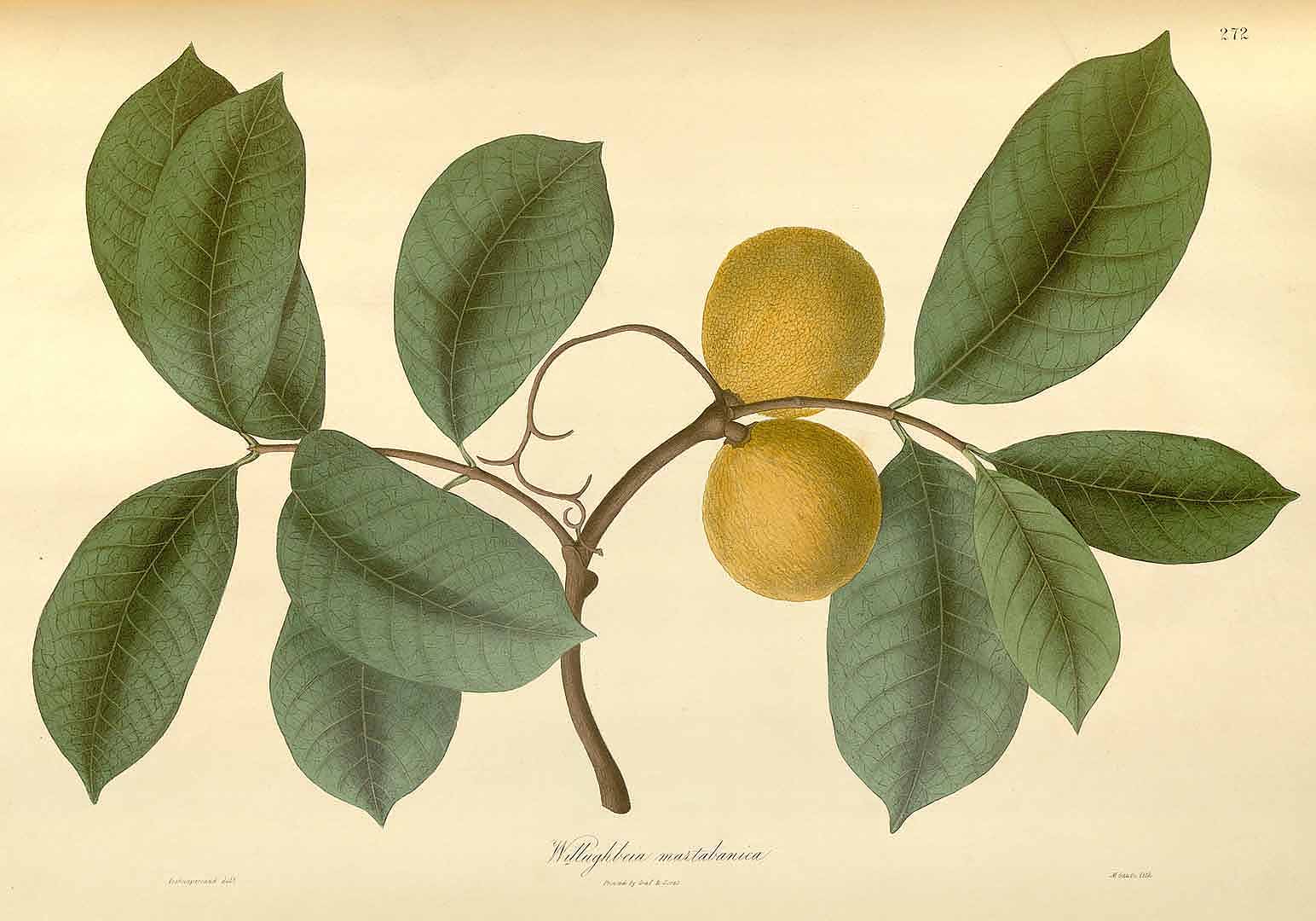! Nouveau site ici !
Vita > Plantae > Magnoliophyta > Magnoliopsida > Gentianales >
Apocynaceae > Willughbeia
Willughbeia edulis

 | *** - **
| *** - **
Vita > Plantae > Magnoliophyta > Magnoliopsida > Gentianales >
Apocynaceae > Willughbeia
Willughbeia edulis

Un grimpeur ligneux ou une vigne. Il a une sève laiteuse. Les petites branches ont des côtes. Il a de longues vrilles ramifiées. Les feuilles sont oblongues et effilées vers la pointe. Les feuilles sont fon... (traduction automatique)
→suite
⬀
Le  donne accès au menu
donne accès au menu (c'est votre point de repère) 😊 ;
En dessous vous avez la classification, à partir de la vie (Vita, premier rang) jusqu'à la classe au dessus de la plante, dont vous trouvez ensuite le nom scientifique/botanique (latin) puis le nom commun (français), le cas échéant ;
C'est aussi un lien vers la fiche complète (tout comme la ✖, en bas à droite, et le +, en dessous de la description) ;
Vient alors l'illustration (ou ce qui la remplace, en attendant), la comestibilité :
Et en bas
⬂





